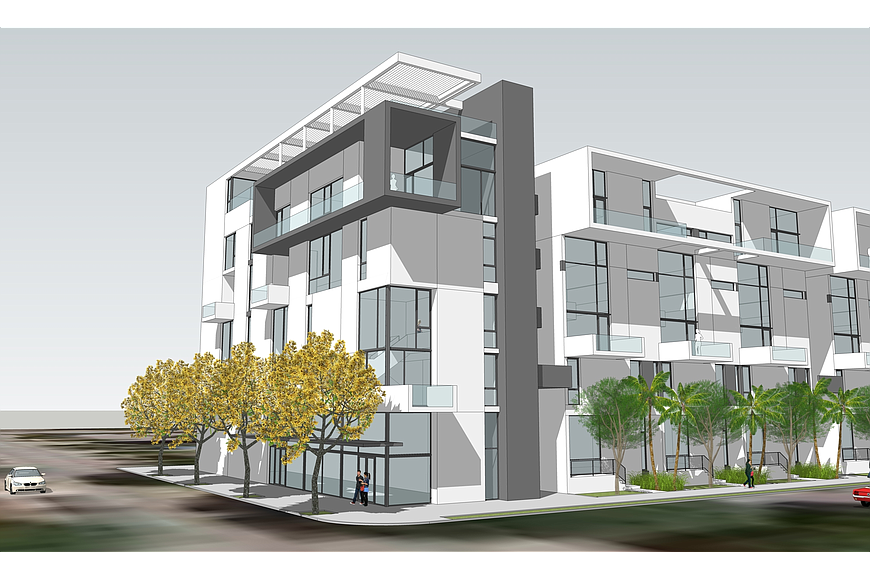- December 18, 2025
-
-
Loading

Loading

There are lots of ways to address the loss of trees that comes with new developments.
As city staff and residents review Sarasota’s tree regulations during a period of growth, Planning Board Member Patrick Gannon thought a simple option would work best.
Last year, he suggested a potential change: for every inch of tree removed, a developer should have to plant an inch of tree to replace it.
Using the standard measure of a tree’s diameter at chest height (about 4.5 feet), Gannon said this would be the best way to make up for trees removed to clear space for new buildings. If a developer were to remove a tree that was 21 inches in diameter, the new rule would require planting, say, three trees that were 7 inches.
He pointed to the Rosemary District, where he said existing mitigation standards would lead to a 62% reduction in the trees on properties associated with 10 developments in the area. Since 2015, the city has been actively working to strengthen its tree regulations. By Gannon’s judgment, those efforts have not been effective.
“It is time to actually look at the disastrous results of the current revised tree protection ordinance based on the results,” Gannon wrote in a November email to city staff.
Earlier this year, the City Commission directed staff to follow up on Gannon’s suggestion and write an amendment to the city’s tree ordinance. Now, with the ordinance written and ready for commission consideration, it has become the target of concern from members of the development community. Some say the standard is too stringent.
“While, at first, the proposal may seem reasonable, it quickly becomes clear that the proposal is completely unworkable as soon as one gives it some thought and scratches the surface,” said Michael Halflants, an architect and former Planning Board member in a Feb. 24 email to the city.
Halflants said the proposed change would create an uneven metric for determining the value of trees. A 150-inch tree could be invasive, diseased and located in the center of a property, but the rule would still require the equivalent of 30 5-inch trees. Meanwhile, removing a smaller-but-healthy tree of a more valuable species would mandate a smaller investment from the developer.
Halflants said Gannon’s frustration at the city’s current standards fails to account for a simple fact: trees grow. Even if the residents are well intentioned, Halflants said the existing regulations are already challenging to comply with. Raising the standards could produce a chilling effect for builders, he fears.
“The proposed rule seems designed to put a stop on all city development and encourage further sprawl in the county,” Halflants wrote.
Halflants suggested a different option for adjusting the city’s tree regulations. Rather than asking arborists to evaluate the health and value of every tree on a property being developed, he proposed charging a fee based on the size and construction cost of a project. This would allow for more holistic planning, he said, with city officials developing a unified tree canopy where appropriate.
“This would be far better solution than the current practice of asking each developer to add a few trees in front of their own site, as these trees invariably will be of different species and planted at different times from those on neighboring sites,” Halflants wrote.
Not all residents are united behind the specifics of the inch-for-inch proposal, either. Richard Mones, chairman of the Downtown Sarasota Condominium Association, said he’s in favor of policies that help create walkable, tree-lined streets and more green space. On Tuesday, he wasn’t sure the proposed changes would effectively achieve that.
“I’m still trying to come to terms with what it is, what it means and what the pros and cons are,” Mones said.
If this isn’t the perfect solution, Mones is hopeful it’s getting the city closer to that. He, too, thinks the tree ordinance isn’t as effective as it should be.
But with residents and builders both more engaged, he thinks the city is now drawing nearer to a more universally acceptable solution.
“I think it’s a work in progress,” Mones said. “I think something needs to be done, and the plan coming up is perhaps not the ultimate plan, but it will allow input from various different points of view — which I hope will then allow something to go forward that satisfies the majority.”
Tim Litchet, the city’s director of neighborhood and development services, agreed that getting more voices engaged would produce better results.
“There’s valid concerns on both sides,” Litchet said. “That generally leads to a good solution, if everyone’s participating.”